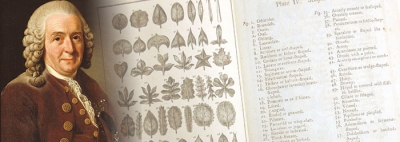
A few days after arriving in the Dutch town of Harderwijk in May 1735, Linnaeus completed his examinations and received his medical degree following the submission of a thesis he had prepared in advance on the topic of intermittent fevers. Linnaeus and Sohlberg then journeyed to Leiden, where Linnaeus sought patronage for the publication of his numerous manuscripts. He was immediately successful, and his Systema Naturae (“The System of Nature”) was published only a few months later with financial support from Jan Frederik Gronovius, senator of Leiden, and Isaac Lawson, a Scottish physician. This folio volume of only 11 pages presented a hierarchical classification, or taxonomy, of the three kingdoms of nature: stones, plants, and animals. Each kingdom was subdivided into classes, orders, genera, species, and varieties. This hierarchy of taxonomic ranks replaced traditional systems of biological classification that were based on mutually exclusive divisions, or dichotomies. Linnaeus’s classification system has survived in biology, though additional ranks, such as families, have been added to accommodate growing numbers of species.
In particular, it was the botanical section of Systema Naturae that built Linnaeus’s scientific reputation. After reading essays on sexual reproduction in plants by Vaillant and by German botanist Rudolph Jacob Camerarius, Linnaeus had become convinced of the idea that all organisms reproduce sexually. As a result, he expected each plant to possess male and female sexual organs (stamens and pistils), or “husbands and wives,” as he also put it. On this basis, he designed a simple system of distinctive characteristics to classify each plant. The number and position of the stamens, or husbands, determined the class to which it belonged, whereas the number and position of pistils, or wives, determined the order. This “sexual system,” as Linnaeus called it, became extremely popular, though certainly not only because of its practicality but also because of its erotic connotations and its allusions to contemporary gender relations. French political theorist Jean-Jacques Rousseau used the system for his “Huit lettres elementaires sur la botanique a Madame Delessert” (1772; “Eight Letters on the Elements of Botany Addressed to Madame Delessert”). English physician Erasmus Darwin, the grandfather of Charles Darwin, used Linnaeus’s sexual system for his poem “The Botanic Garden” (1789), which caused an uproar among contemporaries for its explicit passages.
Credit : Britannica
Picture Credit : Google



